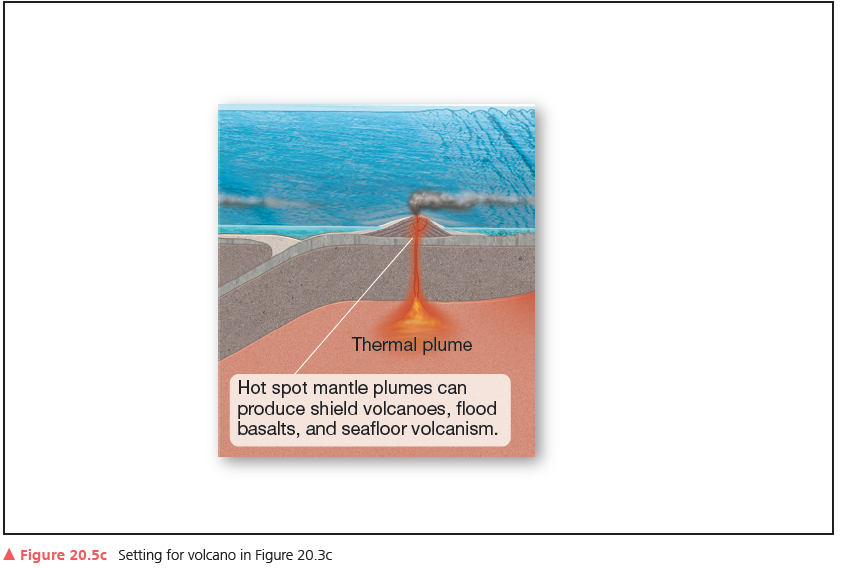Venus has a planetary albedo of 0.8, and Mars has an albedo of 0.22. Using the answer to part (a), determine the effective radiating temperatures of these planets
What will be an ideal response?
Effective Radiating Temp:
Given: ?Te4 = S(1-A)/4
AVenus= 0.8
AMars = 0.22
Venus: Te=[(SVenus/4?)(1-AVenus)]1/4
Te=[(2642.8 W/m2 /4 (5.67 ? 10 –8 W/m2/K4)(1-0.8)]1/4
Venus Te = 219.7 K
Mars: Te=[(SMars/4?)(1-AMars)]1/4
Te=[(593.0 W/m2 /4 (5.67 ? 10 –8 W/m2/K4)(1-0.22)]1/4
Mars Te = 212.5 K
You might also like to view...
Heat is thermal energy that flows due to
A. calorie imbalance. B. molecular speed. C. temperature differences. D. none of the above
Which volcano is shown in Figure 20.3c? Explain your conclusion. Which tectonic setting is the source of its magma? What are the types of materials produced during eruptions and the hazards associated with these volcanoes?

The southern hemisphere's summer solstice occurs
A) at the same time as the northern hemisphere's summer solstice.
B) on or around June 21.
C) on or around December 21.
D) during the northern hemisphere's equinox.
What are the likely consequences if a 200 m asteroid struck the center of a 3 million person city?
A. near complete destruction B. less than 10 percent of the city destroyed C. about 50 percent of the city destroyed